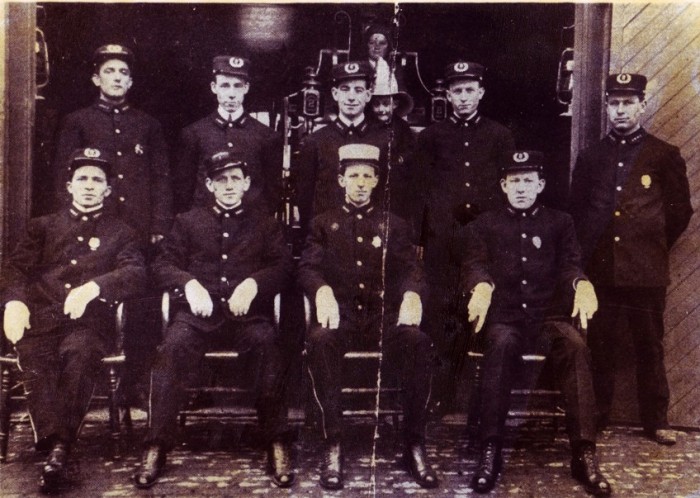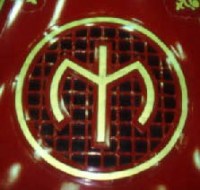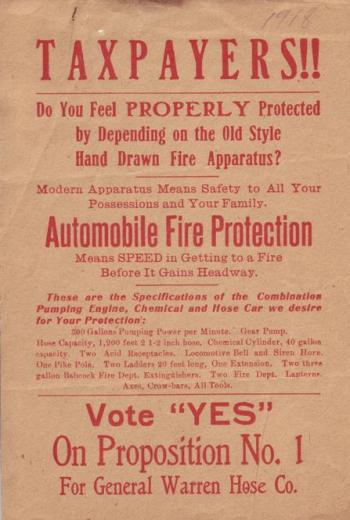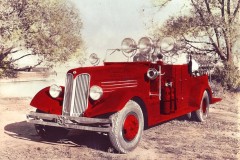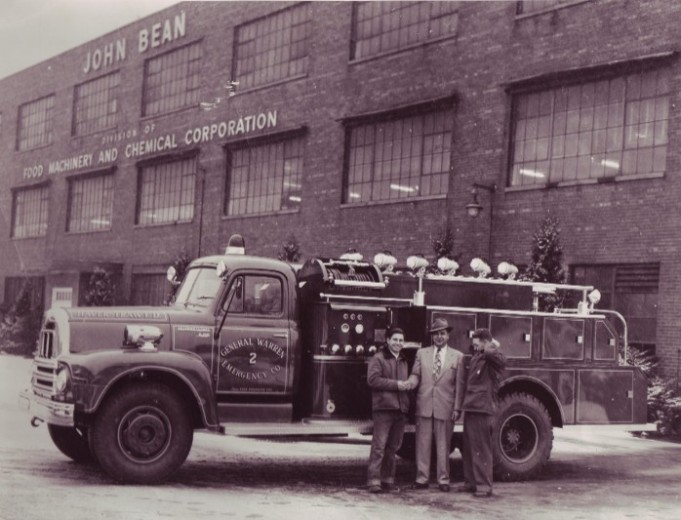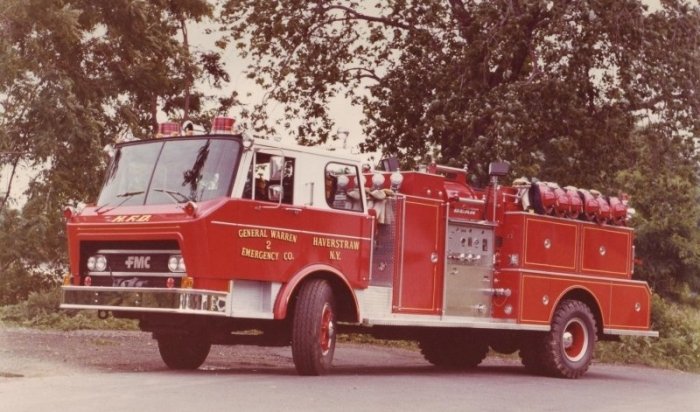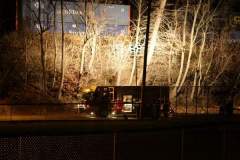
QUARTERS
SOUTH SIDE OF MIDDLE STREET 1854 – 1883
On September 1st, 1854, the Village of Warren purchased from Mr. Isaiah Millburn a building at what is now 36 Middle Street. The firehouse cost $700.00 and was used from 1854 -1936.

As you can see from this picture, the bay door has been bricked over, but is quite visible. The flagstaff also still remains. At $700.00, the price was high for those days, but the location on Middle Street was centralized and would have been a valuable location at that time. After we vacated this building, the Triumph Hose Company was to move in.
NORTH SIDE OF MIDDLE STREET 1883 – 1936
Up until 1880 Rescue had been meeting in Osborne Hall on Liberty Street but in this year a new building was erected for them opposite General Warren on the North side of Middle Street. At meeting of the Board of Trustees held March 6th, 1882 a resolution was passed to raise the sum of $1000 for the purpose of purchasing a suitable house for General Warren Engine Company No. 1 and passed by the taxpayers on March 22nd. This new building was built on the west side of the building then occupied by Rescue in 1883 and the Foreman was advised at meeting of the Village Board of December 5th, 1883 that the new house was ready for use.

At meeting of the Board held January 7, 1884 the Foreman, Frederick Glassing, Jr. was presented with 36 keys for new engine house for No. 1. The company was still in possession of the hand engine and several more cisterns had been constructed throughout the village one of which was in the street in front of the new fire-house. General Warren’s quarters on the left, or west side of the building.
MUNICIPAL BUILDING 1936 – Present
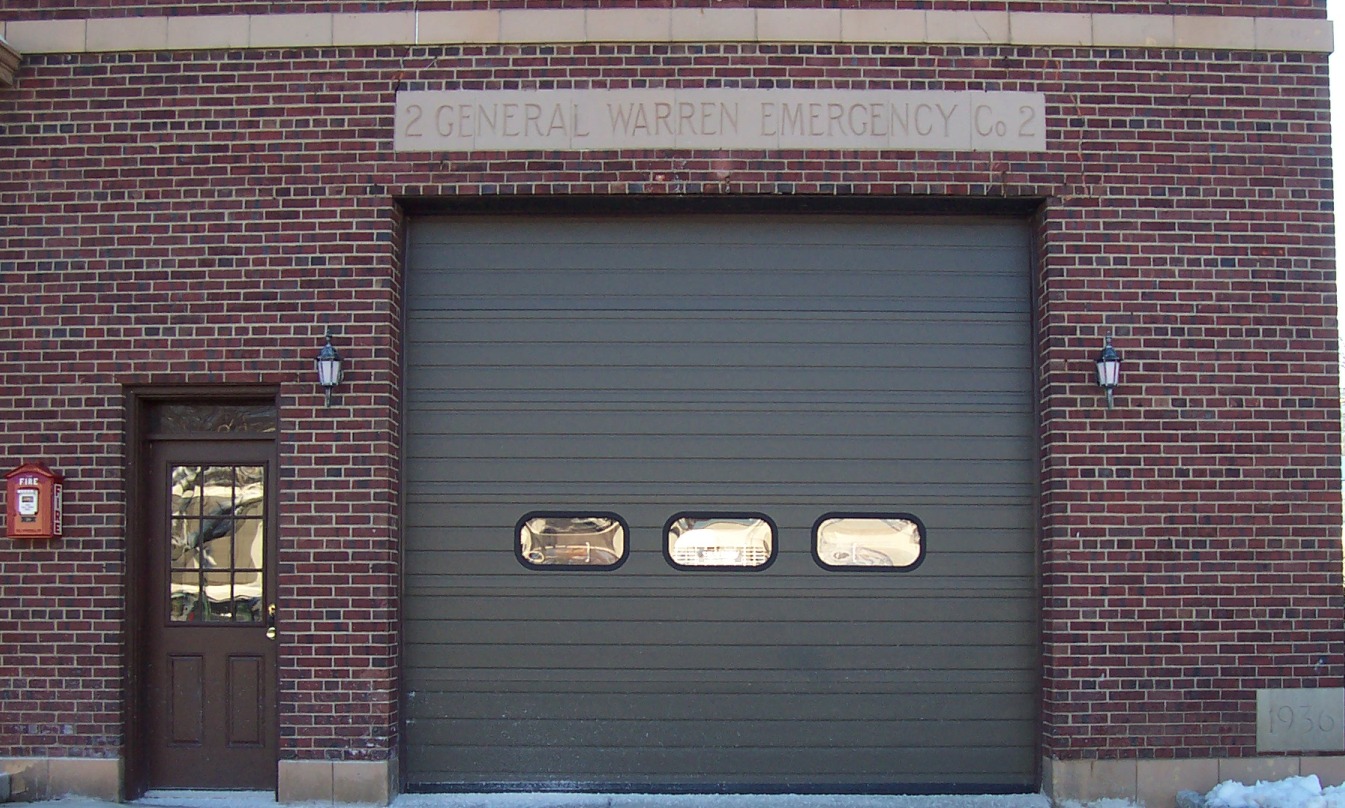
In 1936, the Village of Haverstraw erected a new Municipal Building on industrial land on Maple Avenue. A new Village Hall, Police Station, Quarters for the 3 Middle Street companies and space for the D.P.W. was created at this time.
As the 1950′s approached, the Municipal Building was the center of activity in the village that would easily host 20,000 people for street festivals and ball games. With the advent of radio communications, radio station 4-100 was located in #2′s quarters, and remained there until the Haverstraw Village Police consolidation in 2006. The DPW was to move to a new building in the late 1970′s and the Village was to move to the Provident Bank building at the turn of the century.

Today, the Municipal Building the the home of the Haverstraw Fire Department. Meeting rooms, offices, and space for training as well as a new Radio Room were freed up after the Village Government moved to New Main Street. The Cosgriff Hose Ladies Auxiliary, the Chiefs, and the Companies got a little extra room after a long cramped existence. Today, after dedicating the Council Rooms to all of the Past Chiefs of the Haverstraw Fire Department, all department functions are held in the ‘Shrine’.
A major renovation in 2010 in anticipation of the new 4-99 took place, and the new Rescue Hook and Ladder Rooms were expanded into the old 551 poky.
APPARATUS
1854 & 1857 BUTTON HAND TUBS
On September 21, 1854 the company was to receive its first apparatus. Manufactured by L Button and Company of Waterford New York, the pump had 7″ cylinders and a 5″ stroke. Operated by two parallel arms on either side of the machine, it’s hard suction was stored above the body, what was known as squirrel style. The cost of the new apparatus along with hose and the hose cart was $1089.00
The company has no known photo record of this handtub, although it was known to be in service from September 1854 through sometime in 1887. The second handtub, that belonging to the disbanded Union #2 was acquired by General Warren on May 5th, 1887 after Union #2 disbanded.
THE HOSE CARTS
During 1884, an application was received by the Village Board to supply Haverstraw with water, and shortly thereafter construction started on a pressurized water system. By 1885, it was recommended to the Board of Engineers that fire hydrants be placed throughout the Village to improve fire protection. This work was to commence the next spring, and by July 6th, 1886 it was reported that 13 hydrants were in service. By October 5th, 1886 it was reported that 37 hydrants were in service and this set the stage for the Hose Carts.
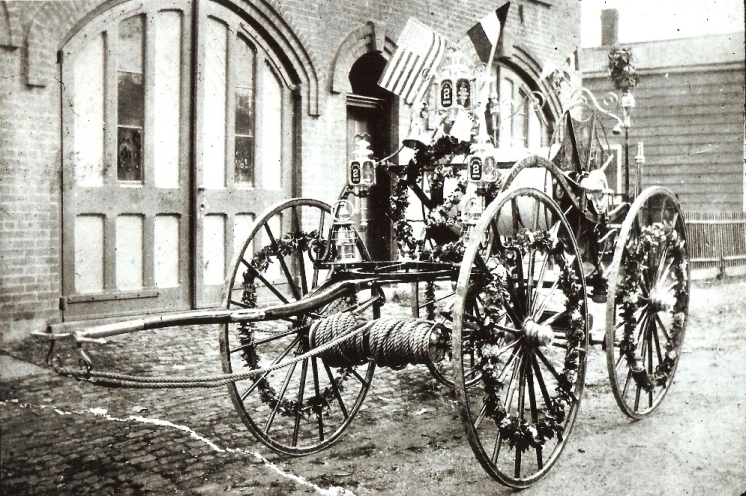
At this time, General Warren , Union, and Triumph responded with handtubs and hose reels while Lady Warren had a steamer. They drafted water from cisterns and other sources throughout the Village. With the advent of fire hydrants, pumps were no longer needed to draw water. As a result, the village sold the Lady Warren steamer, and put all of the hand engines in storage. Four wheeled hose carriages were purchased by the Village and distributed to the companies

In a later development, two wheeled hose carts were purchased to replace the bigger and heavier 4 wheeled variety, and the 4 wheeled versions were kept by the companies and used as parade carriages.
Above is a 2 wheeled hose cart that was used during a demonstration on the Bank Corner for the 100th anniversary of the H.F.D. in 1954. Congers came to the village with their steamer which they fired and pumped. The 2 wheeled hose carts that the Village bought were exchanged between the companies depending on needs, and a single hose cart still survives today owned by a private collector.
1919 MACK AC TRIPLE COMBINATION PUMPER
With the turn of the century, motorized auto cars and flat bed chassis became prevalent in the fire service. Haverstraw had two companies equipped as such, Relief Hose with a Sterns 3-60 Automobile and Hale pump. Lady Warren had hose on a Pope-Hartford chassis . General Warren responded with the Union engine, and a 2 wheeled hose-cart.
General Warren Hose Company #2 would come to accept delivery, on September 27th, 1919, of a Mack AC Combination Pumping Engine, our first motorized apparatus. The Mack had a 300 gpm pump, 300 gallon tank, 40 gallon chemical extinguisher, 1200 feet of 2 1\2″, and assorted tools.
We were by this time known as General Warren Hose Company #2, evidenced by the lettering on the truck.
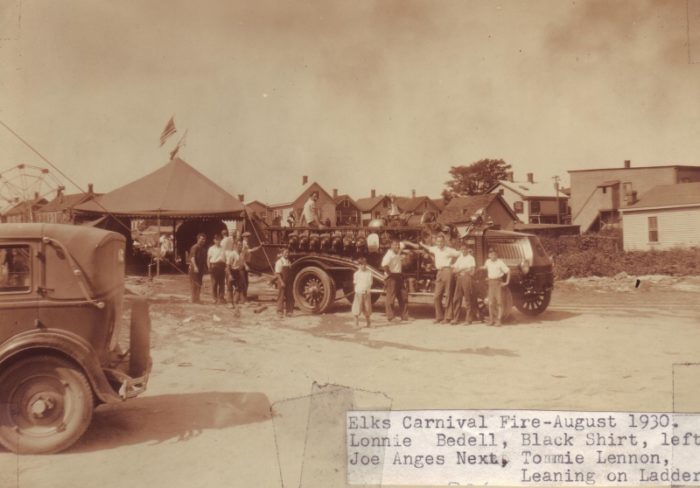
The 1919 Mack Triple Combination pumper served the company until 1936 and was last seen as the village honey wagon well into the 1950’s.
1936 SEAGRAVE RESCUE AND SALVAGE TRUCK
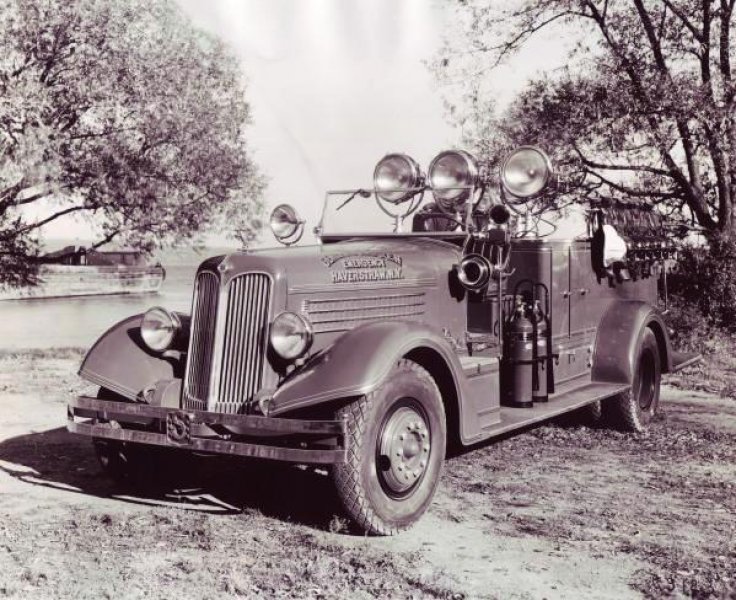
The 1936 Seagrave was the second motorized apparatus purchased for General Warren. This truck was designed to carry lighting, salvage equipment, and in a new development, tools for industrial accidents and automobile extrication. With war clouds on the horizon, and before the advent of the ambulance corps, many departments began equipping fire trucks with first aid and rescue equipment. This was the ‘cutting edge’ technology of its day. The flashlight and iodine truck would also respond with accident victims directly to Nyack Hospital when the need arose.
Below is the initial proposal for the 36 Seagrave. As you can see, the truck was spec’d out with a ‘Northern Booster Pump’, 150 feet of 3/4″ hose, and a 100 gallon tank. The pump was dropped in the final build. The 36 Seagrave is the design basis for all of our trucks since.
Click to open in a PDF format
At the meeting held on February 2nd, 1937, the company moniker again was changed from General Warren Hose Co.#2 to General Warren Emergency Company #2, a reflection of its mission, and we remain so today.
The 36 Seagrave was last seen sitting in Jurgensens Machine Shop on West Street.
1954 INTERNATIONAL JOHN BEAN HIGH PRESSURE
“High Pressure and Whistling Fog”
Our 1954 International Harvester John Bean High Pressure truck was to become the benchmark for all of our apparatus since. The John Bean High Pressure had a 300 gallon tank, high pressure discharges, electric generator, hydraulic extrication tools, lighting, and ‘Indian’ tanks and became the workhorse of the department through the 50’s and 60’s.
With the ability to pump water, work accidents, and complete salvage operations, unit 4-EM was born. Shown with our first boat. When we retired this truck in 1977, it went first to the Village as a sewer jet, eventually going to the Village of West Haverstraw as a stake truck.
1977 FMC JOHN BEAN SPARTAN RESCUE TRUCK
“The Jaws and Covered Crew Bench”
Our 1977 FMC John Bean High Pressure truck was a logical replacement for the 1954 International. Designed with a covered crew bench and air pack racks behind the cab, this apparatus carried our first ‘Jaws of Life’, had a permanent foam dispensing system, and carried 6 firefighters comfortably and safely under cover. The Village donated this truck and excess equipment to a village in the Dominican Republic. It is currently in service in that country.
Below is the original Specification and Contract for the 77 FMC
Click to open in PDF Format
1998 SAULSBURY/SPARTAN HEAVY RESCUE
The General Warren Emergency Company is the Heavy Rescue Company of the Haverstraw Fire Department. General Warren Emergency Company responds as unit 4-EM to all activities dispatched to Rockland County Department 4. 4-EM is equipped with onboard extrication tools, air bags, portable generators, ventilation equipment, power tools, lighting, portable pumps, firefighter S.C.B.A., firefighter comfort, and other rescue equipment. Our 1998 Saulsbury/Spartan Gladiator is also equipped with a 4 stage Waterous pump, a 400 gallon tank, and permanent foam firefighting capability.
